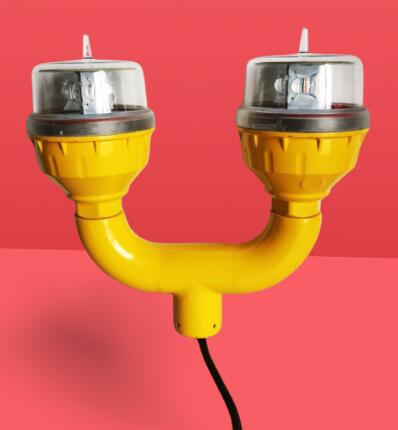Enhancing Aviation Safety with Double Obstruction Lights
Aviation safety relies heavily on effective obstruction lighting systems to prevent collisions between aircraft and tall structures. Among the various lighting solutions available, double obstruction lights have emerged as a critical component in ensuring visibility and compliance with international aviation regulations. These lights provide redundancy, increased reliability, and enhanced visibility in both day and night conditions. This article explores the significance, functionality, and applications of double obstruction lights in modern aviation safety.
The Importance of Obstruction Lighting
Obstruction lighting serves as a visual warning system for pilots, helping them identify tall structures such as communication towers, wind turbines, bridges, and skyscrapers. The primary purpose of these lights is to minimize the risk of collisions, especially in low-visibility conditions such as fog, rain, or darkness.
Double obstruction lights take this safety measure a step further by incorporating two independent light sources within a single unit. This design ensures that even if one light fails, the other remains operational, maintaining compliance with aviation safety standards.
How Double Obstruction Lights Work
A double obstruction light typically consists of two lamps or LED modules housed in a single fixture. These lights are designed to operate simultaneously or in a backup configuration, depending on the system setup. Key features include:
Redundancy: If one light fails, the secondary light continues to function, ensuring uninterrupted visibility.
High Intensity: Many double obstruction lights are available in medium- or high-intensity variants, suitable for different structure heights and visibility requirements.
Durability: Built to withstand harsh weather conditions, these lights often feature corrosion-resistant materials and robust sealing against moisture and dust.
Energy Efficiency: Modern LED-based double obstruction lights consume less power while providing superior brightness and longevity compared to traditional incandescent or halogen lights.
Regulatory Compliance
The use of double obstruction lights aligns with guidelines set by aviation authorities such as the International Civil Aviation Organization (ICAO) and the Federal Aviation Administration (FAA). These regulations specify lighting requirements based on structure height, location, and surrounding air traffic density.
For example:
Medium-intensity lights are often used for structures between 45 and 150 meters.
High-intensity lights are required for structures exceeding 150 meters or those located near airports.
By incorporating double obstruction lights, operators ensure compliance while enhancing safety through redundancy.
Applications of Double Obstruction Lights
Double obstruction lights are widely used in various industries where tall structures pose a potential hazard to aircraft. Common applications include:
Telecommunication Towers – Ensures visibility for low-flying aircraft, especially in rural or mountainous regions.
Wind Turbines – Helps pilots identify wind farms, which are often located in open areas with high air traffic.
Skyscrapers and High-Rise Buildings – Critical in urban environments where multiple tall structures exist.
Bridges and Power Lines – Prevents collisions in areas where aerial navigation is necessary.
Offshore Platforms – Provides essential warnings for helicopters servicing oil and gas installations.

Advantages Over Single Light Systems
While single obstruction lights are still in use, double obstruction lights offer several key benefits:
Increased Reliability: The dual-light system minimizes the risk of complete failure.
Reduced Maintenance: With backup functionality, the need for immediate repairs decreases.
Better Compliance: Meets stringent aviation safety standards that emphasize redundancy.
Longer Lifespan: LED-based double obstruction lights last significantly longer than traditional lighting solutions.
| Double Obstruction Lights |
Future Trends in Obstruction Lighting
As technology advances, double obstruction lights are expected to incorporate smarter features such as:
Remote Monitoring: Real-time diagnostics to detect failures and optimize maintenance schedules.
Solar-Powered Options: Environmentally friendly solutions for remote installations.
| Double Obstruction Light |
Adaptive Lighting: Automated brightness adjustment based on ambient light conditions.
Double obstruction lights play a vital role in safeguarding aviation operations by providing reliable, redundant illumination for tall structures. Their compliance with international regulations, durability, and energy efficiency make them an indispensable component of modern obstruction lighting systems. As air traffic continues to grow, the adoption of advanced double obstruction lights will remain crucial in minimizing risks and enhancing flight safety worldwide.
By investing in high-quality double obstruction lights, industries can ensure both regulatory adherence and the highest levels of operational safety.
